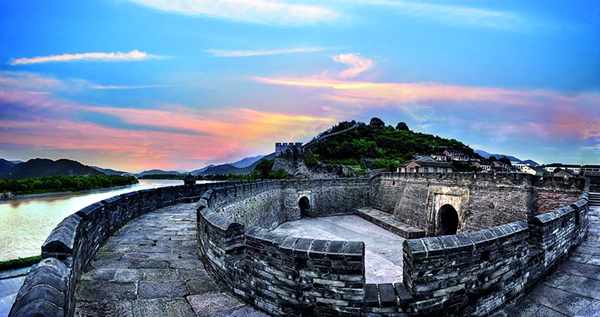This is Taizhou

The Great Wall in the south of the Yangtze River in Linhai, Taizhou, East China's Zhejiang province. [Photo provided to chinadaily.com.cn]
Population: 6,054,000 registered residents (2018)
Location: central coast of Zhejiang province and south wing of the Shanghai economic region
Area: 9,411 square kilometers
Economy:
In 2018, Taizhou embraced robust economic growth with the private sector as the primary contributor. With inauguration of the high-speed rail route linking Hangzhou, Shaoxing and Taizhou, as well as other great industrial investments, Taizhou is in a steady high-quality development pattern.
Taizhou's GDP recorded 487.47 billion yuan ($ 70.72 billion) in 2018, 7.6 percent higher than that of the previous year. Its primary, secondary and tertiary industries contributed added value of 26.43, 218.26 and 242.78 billion yuan, up by 0.9 percent, 8.7 percent and 7.3 percent respectively. The ratio of the three industries is at 5.4:44.8:49.8. The 80,644 yuan of per capita GDP in 2018 was 7.1 percent higher than that of 2017. Its urban and rural per capita disposable income in the year reached 55,000 yuan and 27,000 yuan respectively.
Administrative divisions:
The city of Taizhou has jurisdiction over three districts, namely Jiaojiang, Huangyan and Luqiao, three counties – Sanmen, Tiantai and Xianju, and the three county-level cities of Wenling, Linhai and Yuhuan.
Brief introduction:
Taizhou is the birthplace of China's share-based cooperative economy and one of the most developed regions in the market economy. As one of the three urban clusters in Zhejiang province, it is a significant growth pole for the development of the Yangtze River Delta Economic Zone.
Taizhou is also a city with profound historical and cultural heritage. It is the birthplace of the Chinese Xiatang Culture. Its Tiantai Mountain, the hometown of Buddhism and Taoism, is the birthplace of China's Hehe culture (harmonious culture). It was home to the first localized sect of Chinese Buddhism - Tendai was born here, and the Guoqing Temple with a history of over 1,400 years has affected East Asian and Southeast Asian regions, becoming the ancestral court of the Tiandai in Japan and Korea. As early as AD 230, Sun Quan, Emperor of the Wu Kingdom in the Three Kingdoms period (220-280), dispatched his generals Wei Wen and Zhuge Zhi to set the first sail from Taizhou's Zhang'an town to Taiwan. In the Ming Dynasty (1368-1644), Taizhou became an important port for maritime trade of Zhejiang province and Fujian province. Qi Jiguang of the Ming Dynasty defended against foreign enemies in Taizhou, and the "Great Wall in the south of the Yangtze River" and the "Anti-Japanese Ancient City" here are the blueprints of the Great Wall of the Ming Dynasty in the North.
Mountains, water, ocean and harmonious human relations are the soul and symbols of Taizhou culture that have been passed down for thousands of years. In 2015, Tiantai Mountain and Shenxianju Scenic Area were listed among the top 5A scenic spots in the country.
